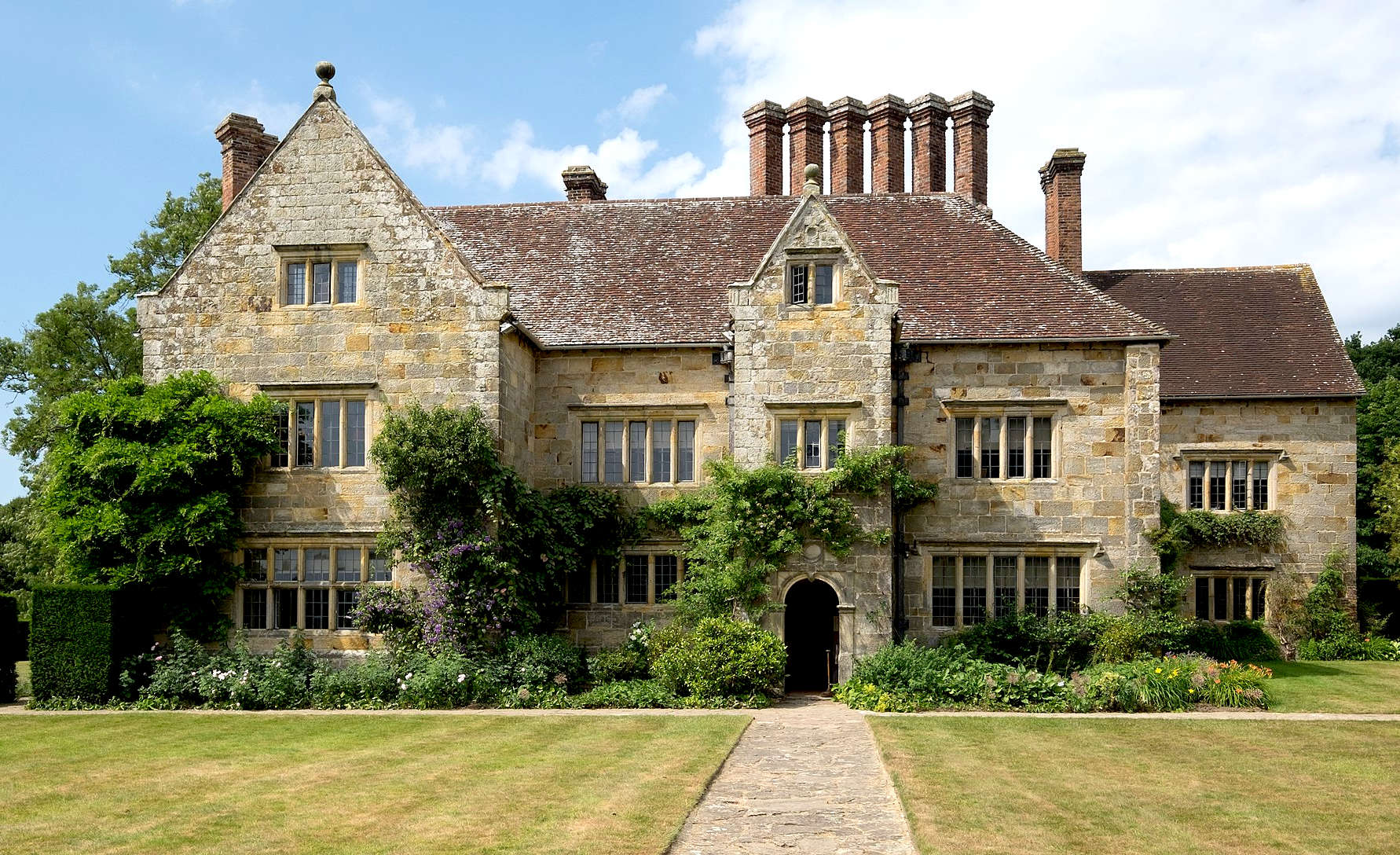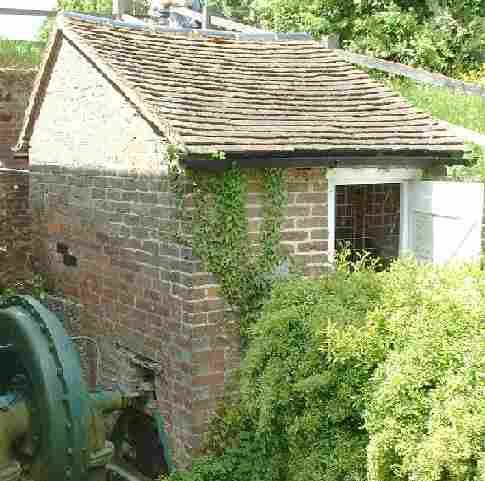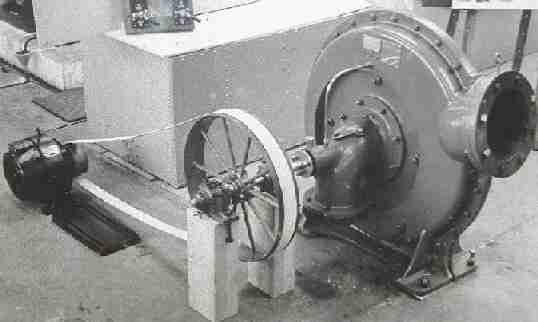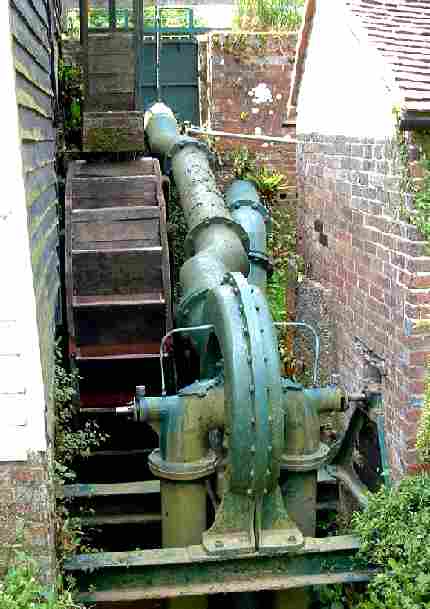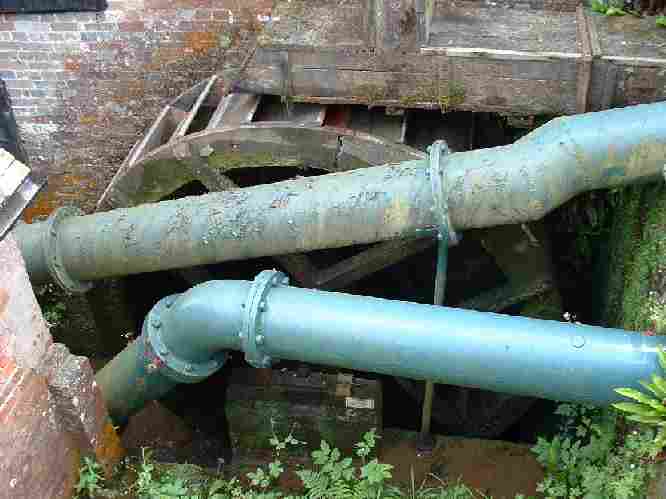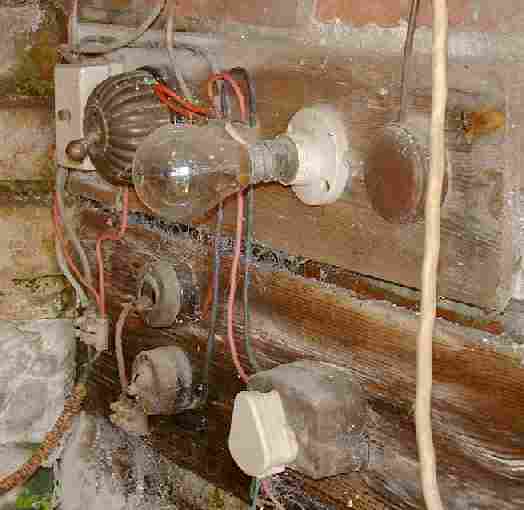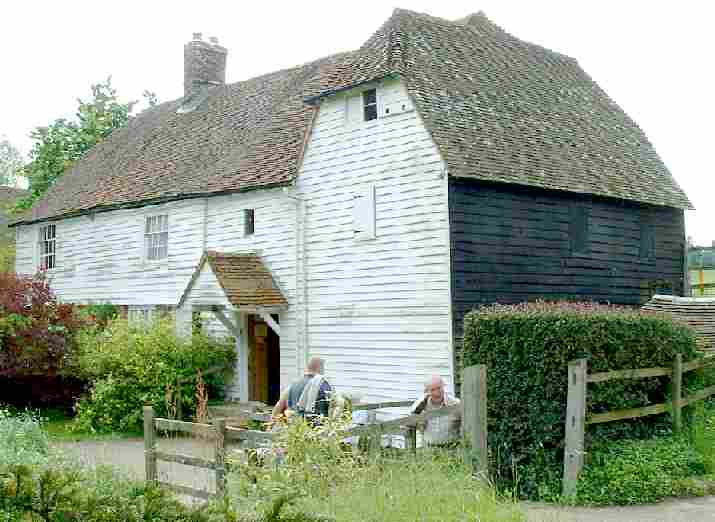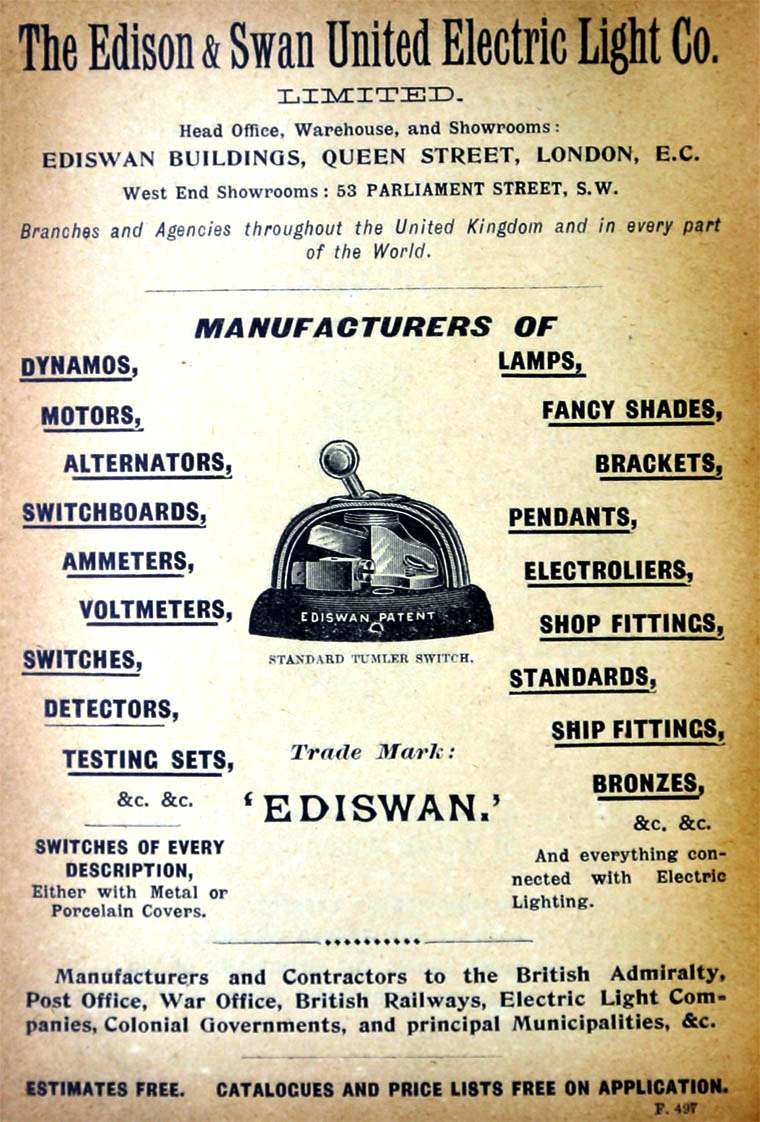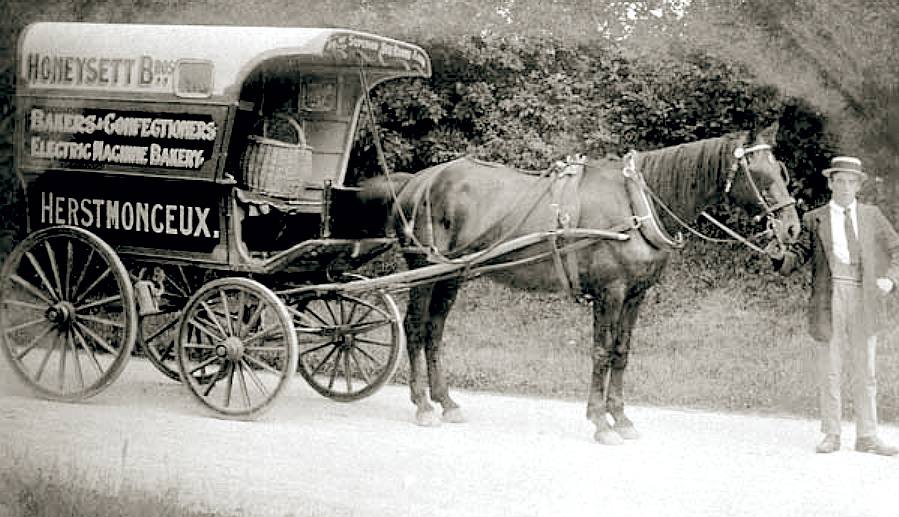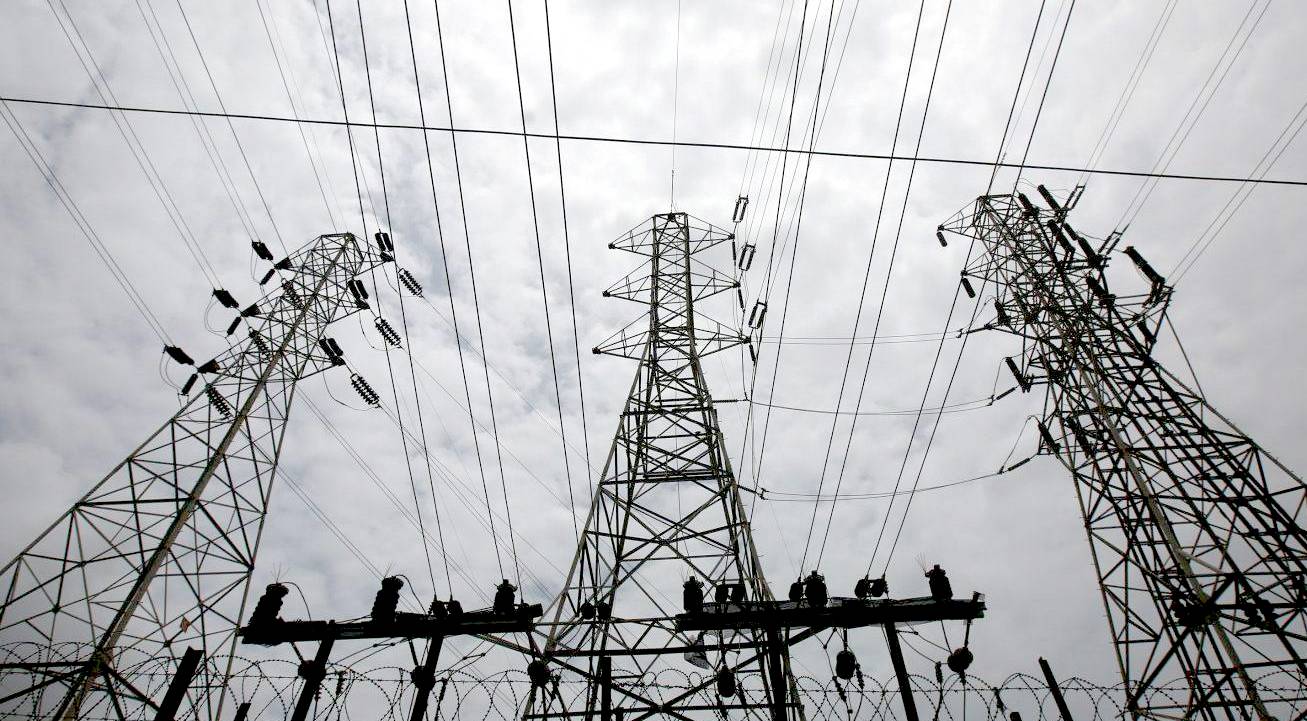|
BATEMANS
Please use our A-Z to navigate this site where page links may lead to other sites, or see HOME
|
|
|
The electrical power generation industry began when light bulbs and other devices that needed reliable energy supplies were invented. Telephones and televisions all needed electricity. Unlike the ordinary man, Rudyard Kipling's house had a large pond and a large pond with a water turbine. Thus, he simply needed a shaft and coupling from the turbine to his shed, and he had electricity for his internal lighting, to replace gas lamps and candles.
Rudyard Kipling was famous for the Jungle Book and other stories of his travels. He was also keen on technology, wishing for electric lighting to replace his gas lamps. At his home in Sussex, Batemans, at Burwash, he coupled a small dynamo via a belt drive to a water turbine adjacent to a mill on the grounds, to generate enough electricity for 10 'Ediswan' light bulbs, from Thomas Edison and Joseph Swan's electric lighting company. This supply may also have been useful for a telephone.
[LEFT] The shed that houses the belt driven dynamo at Batemans. [RIGHT] The belt driven dynamo and water turbine removed for renovation works. The high speed of the water turbine, combined with the large diameter drive pulley, raised the revolutions per minute of the dynamo, to deliver the correct voltage.
The present mill dates from about 1750 when it was operated by John Skinner. It
was last worked by the brothers Richardson in 1902. Rudyard Kipling purchased Batemans and Park Mill in the same year,
removing the waterwheel and installing a turbine in 1903, to gain higher
rotation speeds. The turbine drove a generator and provided Batemans with electricity for 25 years. The mill features in a number of Kipling’s
Sussex stories including ‘Puck of Pook’s Hill’ and ‘Below the Mill Dam’.
The water turbine installed slightly lower than the water wheel on the side of the mill building. The water wheel is used to grind cereals.
The mill can normally be seen grinding on Saturday afternoons. Batemans together with Park Watermill is owned by the National Trust, and there is a combined admission charge
per person.
A classic Ediswan brass electrical switch is seen in the top, left of this picture.
Between 1968-75, the building, which had fallen into a sad state of disrepair, was restored along with the turbine. This building is included on a Monument Protection Programme commissioned in 1995 by English Heritage, along with the 'Electricity Works' at Herstmonceux, Sussex. There are remarkable parallels between the Baron de Roemer on Lime Park, and Rudyard Kipling. Both had a fascination for automobiles and electricity. Where Kipling was content to harness the forces of nature to provide light to his home, the Baron went further and generated electricity supplies for a whole village. Remarkably, these two buildings are the only surviving examples of early rural electricity generation in Sussex. All other installations in Sussex, including municipal, have been demolished, as a remarkable lack of foresight. Especially important as we combat climate change. Now causing heatwaves in the UK, that in 2022 saw sixty houses in London, burnt to the ground. The same at Lytton in British Columbia in 2021.
The Mill building in the grounds of Batemans.
The historic generating building at Batemans, would be unlikely to be considered as a UNESCO world heritage site, as it did not provide public supply, and the private electricity supply was modest, enough to power just ten glass lamps, from technology that is unremarkable at that time. Nevertheless, the property is included on a Monument Protection Programme, set in motion by English Heritage, along with Herstmonceux Generating Station.
SWITCHES & BULBS - Where would we be without electric lighting. A battle royal ensued in the law courts and Thomas Edison and Joseph Swan slogged it out in the London High Court, ending with the combatants working together as the Edison & Swan United Electric Light Co. ELECTRIC BAKERY - The earliest surviving generating station, dating from C. 1900, with battery based load levelling as the core technology, coupled to a 48 volt DC generator, is in the little village of Herstmonceux, Sussex.
The First and Second World Wars accelerated technology faster than ever before, as part of an arms race, where the most advanced weapons would win the battle for a (relatively) free world. Until nuclear power reared its ugly head.
The electrical power generation needed a way of delivering electricity across the country without large voltage drops, that even thick copper cables could not prevent. The solution was higher voltages and pylons with insulators.
Please use our A-Z INDEX to navigate this site
This website is provided on a free basis to promote zero emission transport from renewable energy in Europe and Internationally. Copyright © Universal Smart Batteries and Climate Change Trust 2022. Solar Studios, BN271RF, United Kingdom.
|
